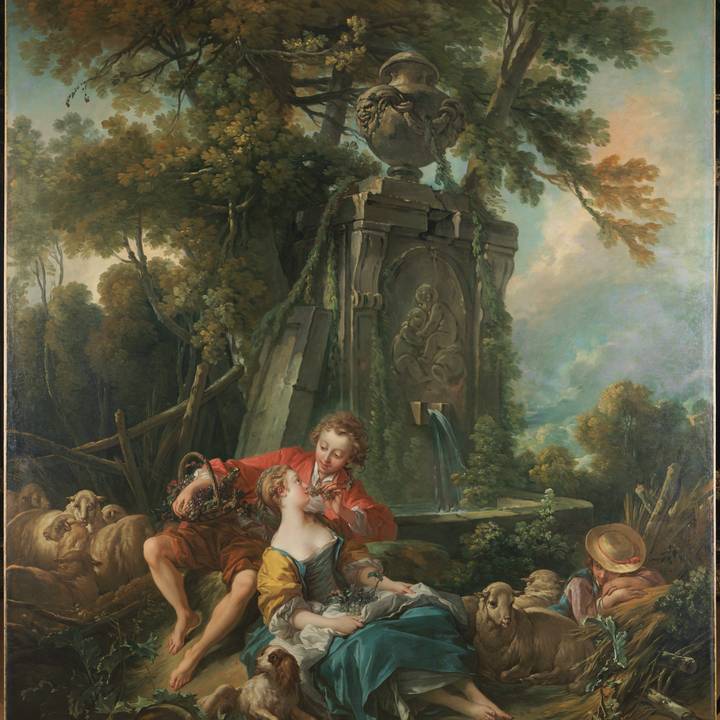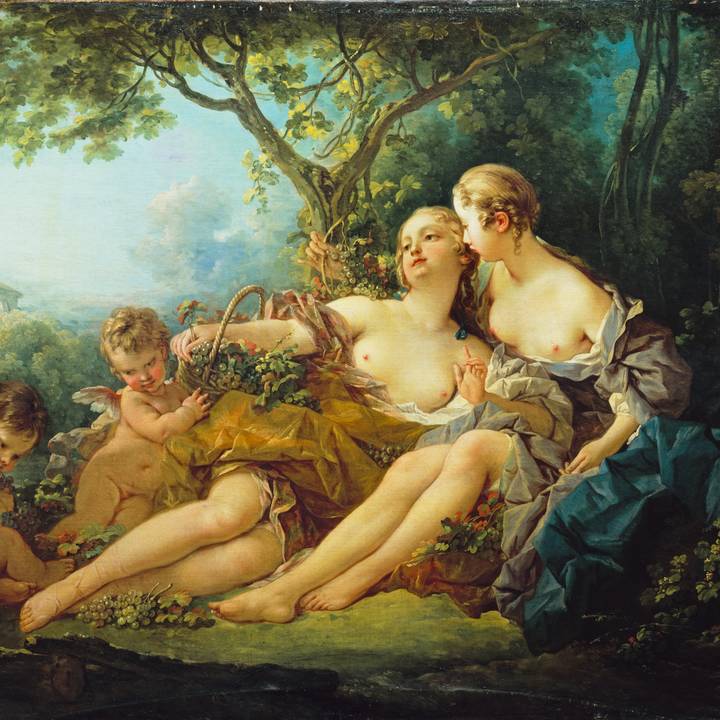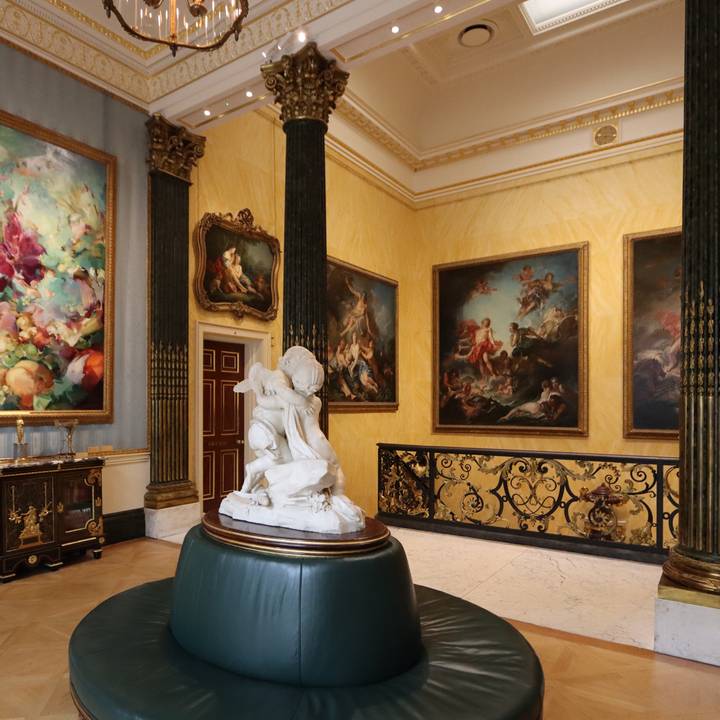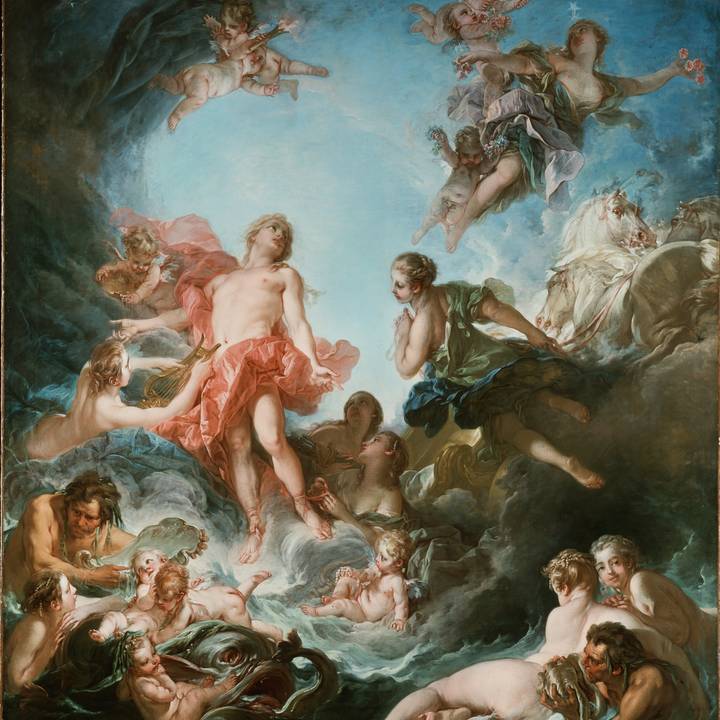Date: 1769
Materials: Oil on canvas
Measurements: 160 x 129 cm, oval
Inv. Nos: P446
In Ovid’s Metamorphoses (II, 417-440), the moon goddess Diana's favorite nymph, Callisto, is seduced by Jupiter, who takes the form of Diana herself. When Callisto’s pregnancy is discovered, Diana, expecting her followers to be as chaste as she, punishes Callisto by transforming her into a bear and setting her dogs upon her.
Ultimately, Jupiter saves Callisto and her son, Arcas, by transforming them into the constellations of the Great and Little Bear. This theme captivated Boucher, who returned to it frequently, reflecting his era’s fascination with gender ambiguity and ideals.
Multiple related versions from the 1760s exist, including one in Fontainebleau that became the basis for a Gobelins tapestry. The present painting, completed the year before Boucher’s death, typifies the more robust compositions of his later years.
In 1768, increasingly frail, Boucher resigned as Director of the Academy. The following year, as Madame du Barry was ascending in the French court, Boucher became an honorary member of the Academy of St. Petersburg.
That same year, after the death of his son-in-law Baudouin, Boucher painted Jupiter and Callisto, relating to other works from the 1760s. This subject also appears in a medallion within the Boucher Tapestry, designed by Boucher and Jacques.
Though not strictly neoclassical, the Jupiter and Callisto tapestry—framed in an oval medallion on a pink background with flowers, birds, and cornucopias—recalls the medallion decorations of 18th-century classical print rooms and Pompeii.
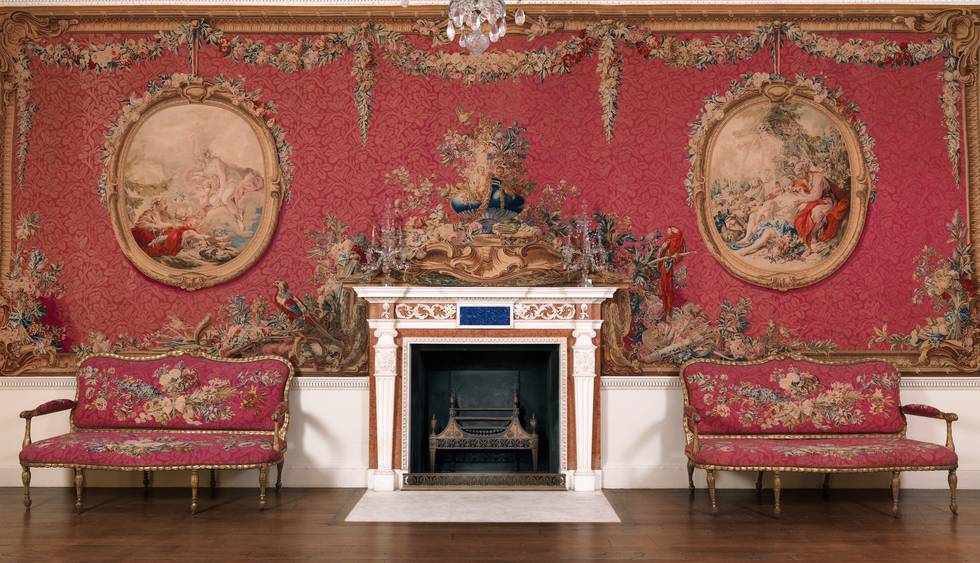
In 1770, Boucher received payment from the Prince de Condé for an oval painting of Jupiter and Callisto, which may correspond to the Wallace Collection’s piece. However, the painting's loose execution hints at Boucher’s declining eyesight, which had begun to affect his work.
As Restout commented: ‘his last compositions, tend towards purple, and his flesh-tints seem ti reflect the effects of a red curtain: he excused this weakening of his sight himself by explaining that he saw only an earth colour where others saw vermillion’.
Text adapted from Hedley, J., Francois Boucher: Seductive Visions, London, 2004.
